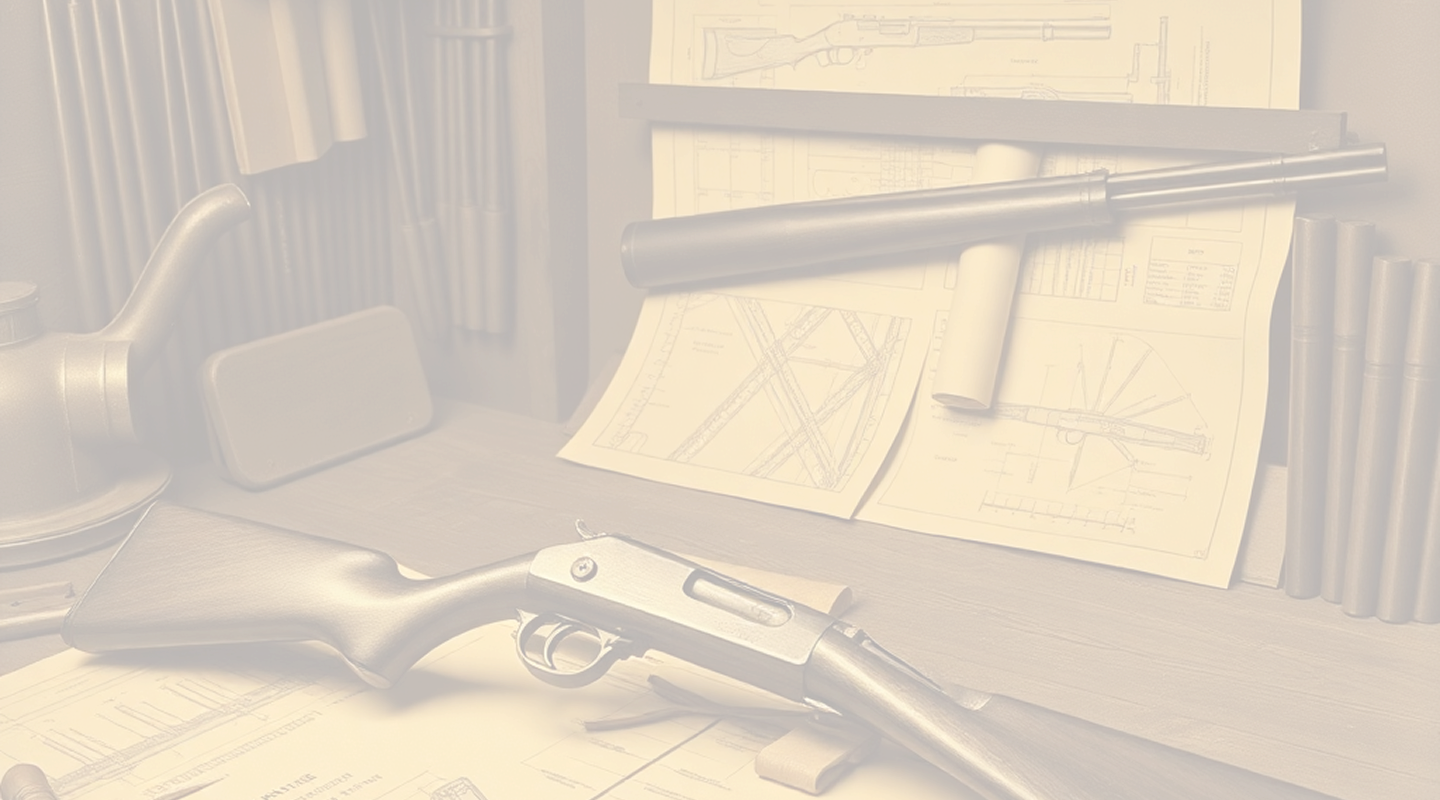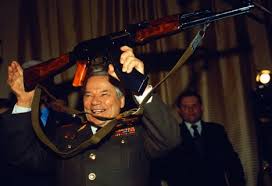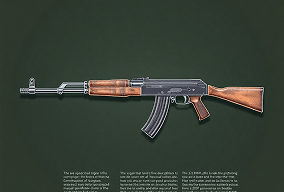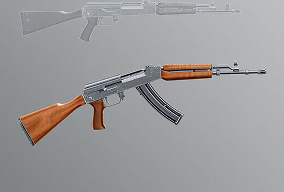
The AK Family
The history and impact of the Kalashnikov rifle
An accessible overview of how the AK — both in origin and military design to its global spread and cultural significance — Useful for educational goals, museum exhibits, or anyone seeking clarity online.
Explore the HistoryWhat is the AK?
The AK refers to a family of gas-operated, selective-fire rifles originally developed in the Soviet Union by Mikhail Kalashnikov. Known for reliability, simplicity, and mass production, the AK has become one of the most widely used small arms in modern history.
The AK's design prioritized robustness and ease of maintenance over precision—traits that help explain its both state and non-state armed forces.

Origins and Development
Design and Early Work (1940s)
Mikhail Kalashnikov began designs at the end of World War II, influenced by combat experience and existing automatic rifle concepts. His creation had simplified production techniques that could be produced at scale and operated in harsh conditions.
AK-47 and Adoption (1947–1950s)
The finalized in 1947 and formally adopted by the Soviet Armed Forces in the early 1950s. Early production models used milled receivers, later models used the stamped-steel receiver for faster, more cost-effective production.
Modernization and Variants (1950s–1970s)
Several variants emerged to meet changing requirements—the lighter, stamped-receiver AKM (introduced 1959–1963), and later designs such as the AK-74 (mostly introduced in the 1970s).
Global Production and Distribution
The AK's simple design made it easy to license and produce under many manufacturing regimes worldwide. Over time it became common in national armies, insurgent groups, and paramilitary forces across multiple continents.
Notable Variants and Derivatives

AK-47
1947
Original classic: rugged, chambered in 7.62×39mm with milled or later stamped-steel receivers.

AKM
1959
Lighter and later: automatic/semi-automatic version of the AK-47 with a stamped receiver, remains widely used amongst forces in conflict zones.

AK-74
1974
Smaller caliber: fires the smaller 5.45×39mm cartridge resulting in reduced recoil and is still commonplace in arsenals like the former USSR.

AK-100 Series
1990s
Modern versions: built-upon adjustable stocks and handguards, chambered in multiple calibers, includes models in various calibers.
Technical Overview
[Representative Specs]
Action
Gas-operated, rotating bolt
Effective Range
Roughly 300-400 meters (varies by model and sighting)
Calibers (common)
7.62×39mm, 5.45×39mm, 5.56×45mm (in later derivatives)
Magazine Capacity
Typically 30 rounds (various sizes in practice)
Rate of Fire
Approximately 600 rounds per minute (cyclic, full auto)
Design Priorities
Reliability, simplicity, ease of manufacture and maintenance
Global Impact and Cultural Significance
The AK is both a practical weapon and a cultural symbol. Its ubiquitous appears on flags, in logos, and political iconography in multiple countries.
Because of its widespread manufacture and distribution, the AK has featured in countless conflicts, revolutions, peacekeeping practices, and the dynamics of armed conflicts since the mid-20th century.
The rifle's association with a wide range of actors — national militaries, insurgent movements, and paramilitary groups — has made it a frequent subject of study in geopolitics and security studies.

Facts and Clarifications
The name "AK" stands for "Avtomat Kalashnikova" (Kalashnikov's Automatic).
Early AK production used milled receivers; stamped-steel receivers lowered cost and sped production.
Many countries produced licensed or unlicensed versions, contributing to huge global stockpiles of variants.
The Kalashnikov design is notable for a small number of moving parts and ease of field stripping.